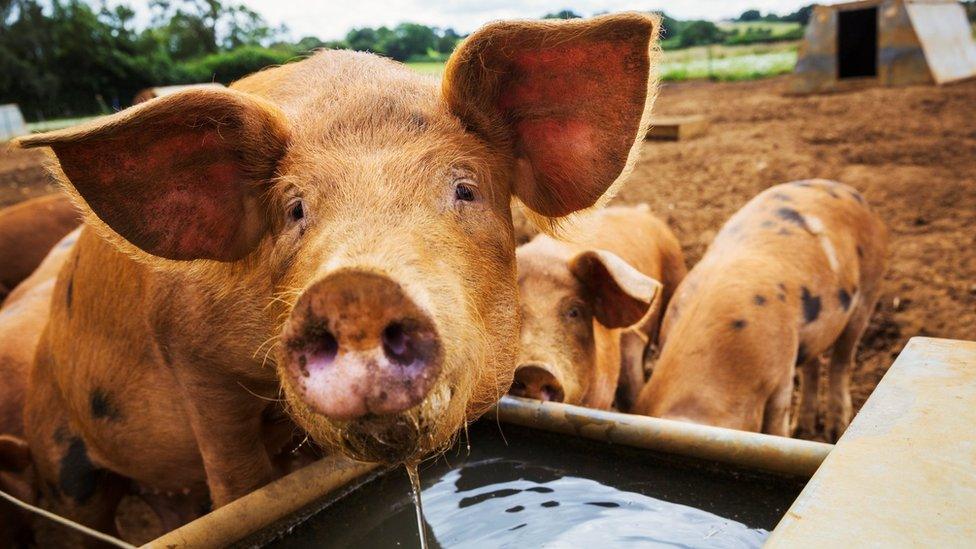Pig sounds translated into emotions for first time in new study
- Published
- comments

A pig's grunts and oinks can reveal its emotions, according to a new study that'll leave you squealing.
Using thousands of recordings gathered throughout the lives of pigs, a team of researchers say they're the first in the world to translate pig grunts into actual emotions.
The report suggests farmers could set up a system to alert them to when their pigs are unhappy, for example when little piglets are fighting.
"With this study, we demonstrate that animal sounds provide great insight into their emotions," said Associate Professor Elodie Briefer from the University of Copenhagen, who co-led the study.
Scientists designed a pig translator, using something called artificial intelligence (AI), that worked out whether an individual pig is feeling a positive emotion or a negative one.
According to the study, it can even tell if the animal's mood is somewhere in between the two.
"We have trained the algorithm to decode pig grunts," said Dr Briefer.
It is a set of mathematical instructions or rules that, especially if given to a computer, will help to calculate an answer to a problem.
"Now, we need someone who wants to develop the algorithm into an app that farmers can use to improve the welfare of their animals," she added.
Pig sounds were recorded in both working farms and experimental situations - which based on the behaviour of the pigs - are either linked with a positive and negative emotion.
Positive situations can include when piglets drink milk from their mothers or when they are united with their family after being apart.
While the situations linked with negative emotions include separation and fights between piglets.
The calls, behaviour and heart rates of the animals also were monitored and recorded when possible.
More than 7,000 audio recordings were analysed to see if there was a pattern in the sounds as a function of the emotions, and if researchers could tell apart positive and negative situations and emotions.
Screams and squeals were more connected with negative emotions, while barks and grunts occurred both in situations where the pigs experienced positive or negative emotions.
Dr Briefer suggests that with enough data to train the AI system, the method could also be used to better understand the emotions of other mammals.
The study is published in the journal Scientific Reports.
- Published12 November 2019
- Published18 July 2019
- Published13 February 2018
